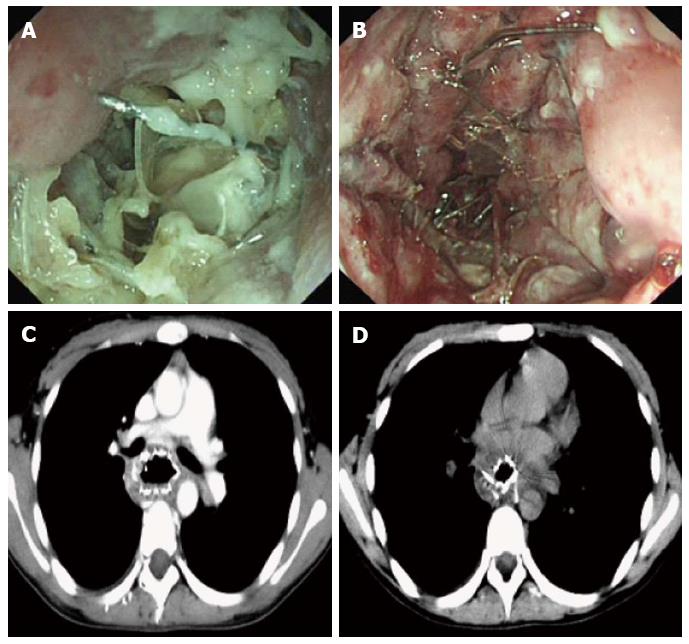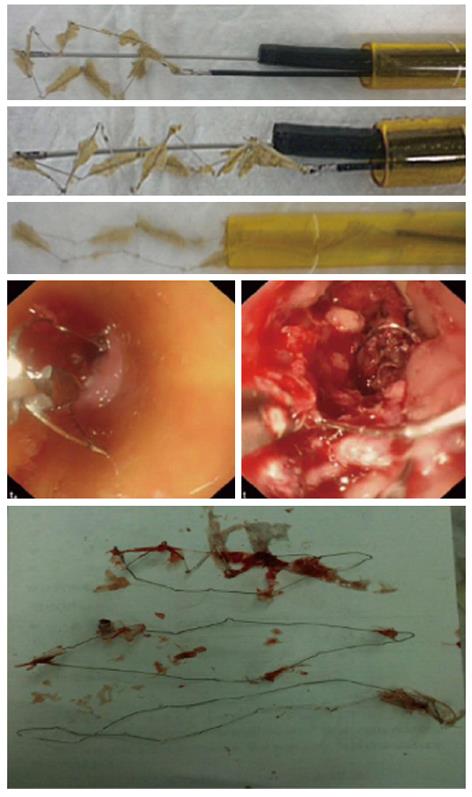Copyright
©2013 Baishideng Publishing Group Co.
World J Gastroenterol. Oct 14, 2013; 19(38): 6505-6508
Published online Oct 14, 2013. doi: 10.3748/wjg.v19.i38.6505
Published online Oct 14, 2013. doi: 10.3748/wjg.v19.i38.6505
Figure 1 Disordered stent structure as a result of failure of repeated attempts at gastroscopic removal of the stent.
A-D: Enhanced chest computed tomography scan performed showed the stent was situated in the middle section of the esophagus after esophageal stent placement, the wall of the middle and inferior segments of the esophagus thickened noticeably, part of the stent was embedded into the esophageal wall, borders between the stent and surrounding fat were blurred, and the upper end of the stent pressed against the trachea carina.
Figure 2 An alligator forceps was inserted into an ST-E tube alongside a gastroscope and, under the guidance of gastroscopy, the stent wire was gripped and pulled up into the ST-E tube.
Biopsy forceps were inserted into the lower section of the Z-shaped stent through a biopsy hole in the gastroscope to fix the stent; in the meantime, the alligator forceps continued to be used to pull up the stent wire until the Z-shaped metal loops became elongated strips. All the stent wire was removed in stages through the ST-E tube.
- Citation: Peng GY, Kang XF, Lu X, Chen L, Zhou Q. Plastic tube-assisted gastroscopic removal of embedded esophageal metal stents: A case report. World J Gastroenterol 2013; 19(38): 6505-6508
- URL: https://www.wjgnet.com/1007-9327/full/v19/i38/6505.htm
- DOI: https://dx.doi.org/10.3748/wjg.v19.i38.6505














